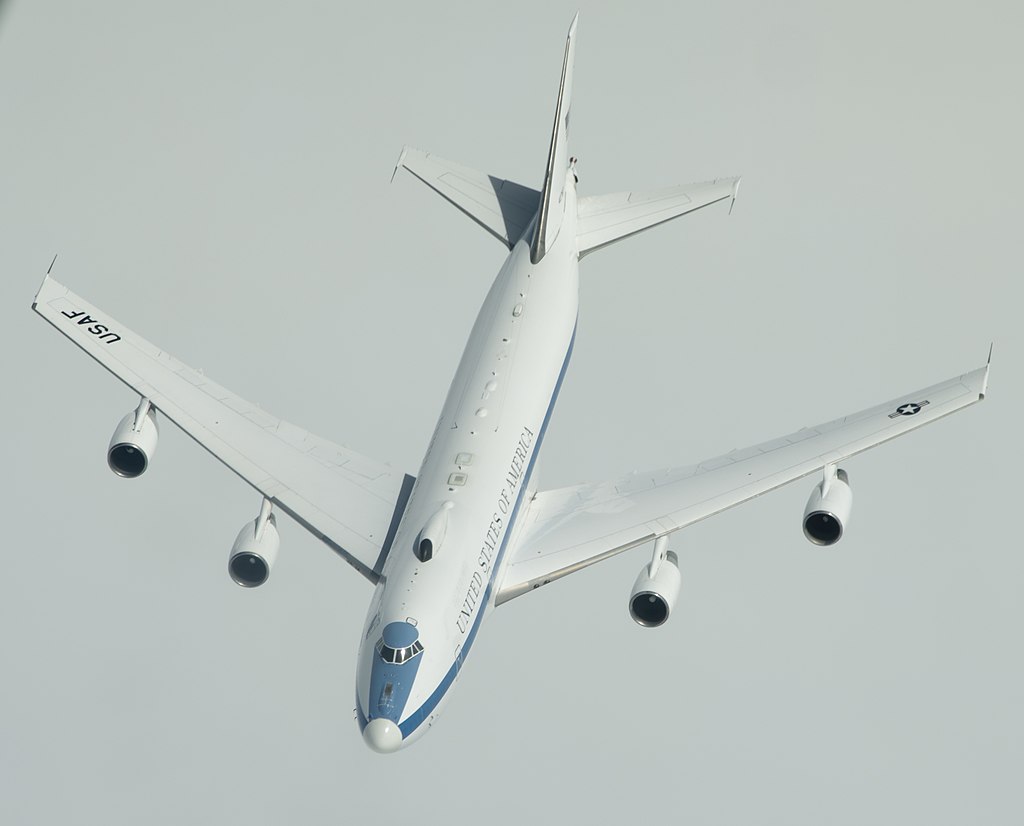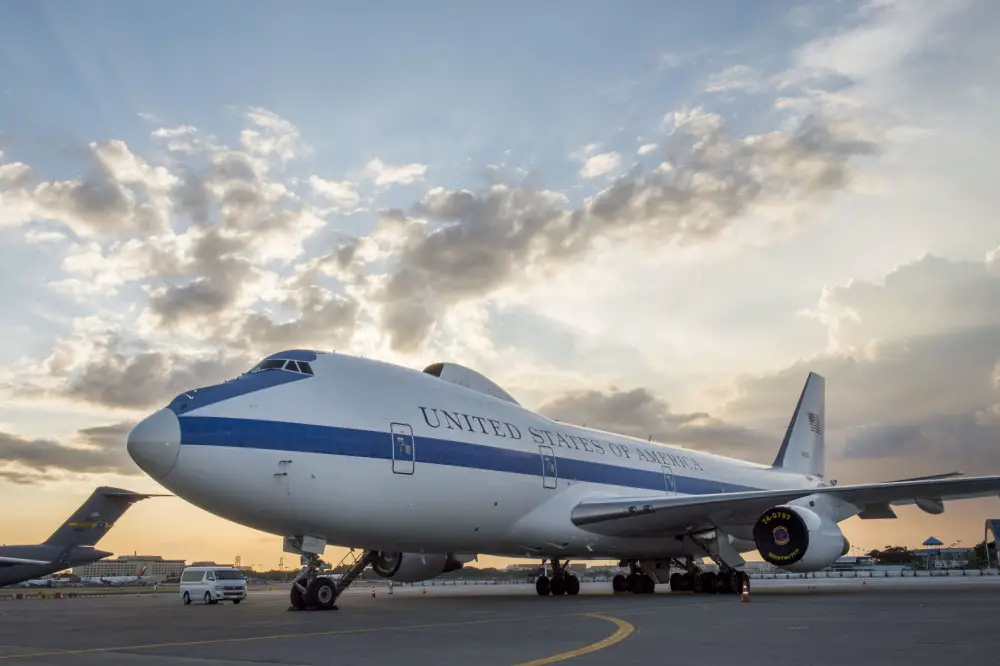The Boeing Co., Oklahoma City, Oklahoma, has been awarded Option Five to its indefinite-delivery/indefinite-quantity contract FA8106-16-D-0002 under order FA8134-21-F-0001, in the estimated amount of $196,477,863. The Option Five exercise will provide E-4B program management, field service representatives, system integration laboratory support, emergency support, spare procurement, spare repair and overhaul, engine sustainment and scheduled and unscheduled depot maintenance. Work will be performed in Oklahoma City, Oklahoma; Offutt Air Force Base, Nebraska; and San Antonio, Texas, and is expected to be completed Nov. 30, 2021. The U.S. Air Force Life Cycle Management Center, Tinker AFB, Oklahoma, is the contracting activity.
The Boeing E-4 Advanced Airborne Command Post (AACP), the current “Nightwatch” aircraft, is a strategic command and control military aircraft operated by the United States Air Force (USAF). The E-4 series are specially modified from the Boeing 747-200B for the National Emergency Airborne Command Post (NEACP) program. The E-4 serves as a survivable mobile command post for the National Command Authority, namely the President of the United States, the Secretary of Defense, and successors. The four E-4Bs are operated by the 1st Airborne Command and Control Squadron of the 595th Command and Control Group located at Offutt Air Force Base, near Omaha, Nebraska. An E-4B when in action is denoted a “National Airborne Operations Center”.

The E-4B is designed to survive an EMP with systems intact and has state-of-the-art direct fire countermeasures. Although many older aircraft have been upgraded with glass cockpits, the E-4B still uses traditional analog flight instruments, as they are less susceptible to damage from an EMP blast. The E-4B is capable of operating with a crew up to 112 people including flight and mission personnel, the largest crew of any aircraft in US Air Force history. With in-flight aerial refueling it is capable of remaining airborne for a considerable period, limited only by consumption of the engines’ lubricants. In a test flight for endurance, the aircraft remained airborne and fully operational for 35.4 hours, however it was designed to remain airborne for a full week in the event of an emergency. It takes two fully loaded KC-135 tankers to fully refuel an E-4B.
In January 2006, Secretary of Defense Donald Rumsfeld announced a plan to retire the entire E-4B fleet starting in 2009. This was reduced to retiring one of the aircraft in February 2007. The next Secretary of Defense, Robert Gates, reversed this decision in May 2007.[24] This is due to the unique capabilities of the E-4B, which cannot be duplicated by any other single aircraft in Air Force service, and the cancellation in 2007 of the E-10 MC2A, which was considered as a successor to the EC-135 and E-8 aircraft, and could also perform many of the same tasks of the E-4B. As of the 2015 federal budget there were no plans for retiring the E-4B. The E-4B airframe has a usable life of 115,000 hours and 30,000 cycles, which would be reached in 2039; the maintenance limiting point would occur sometime in the 2020s.
